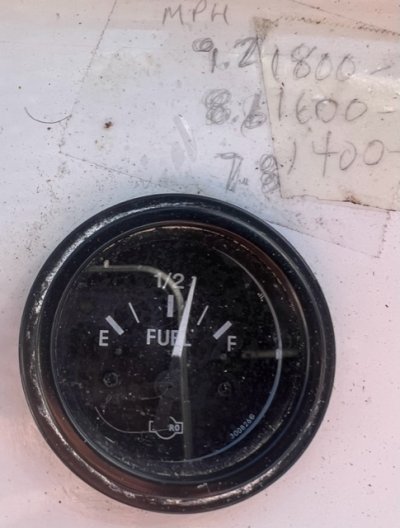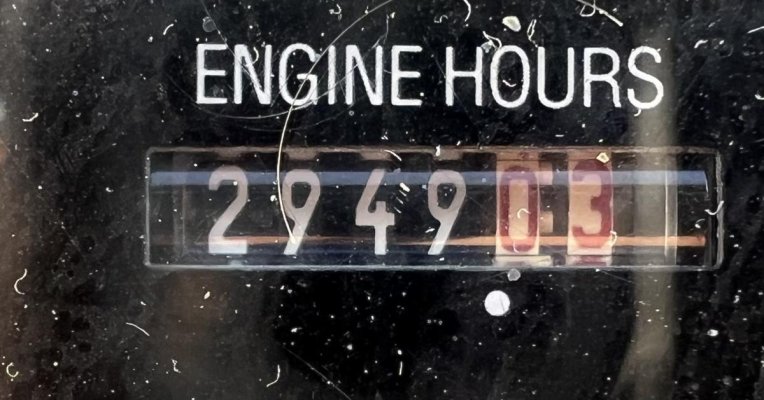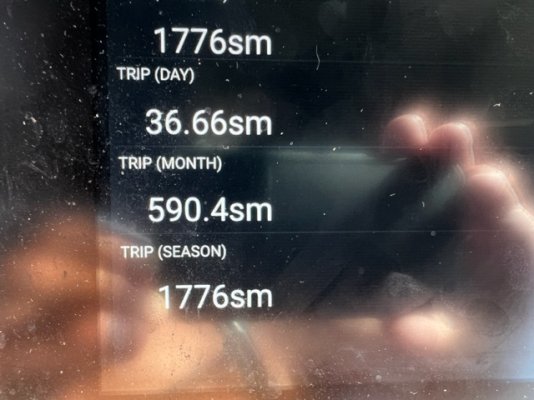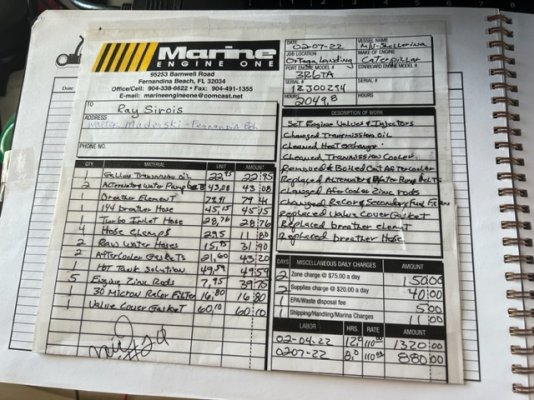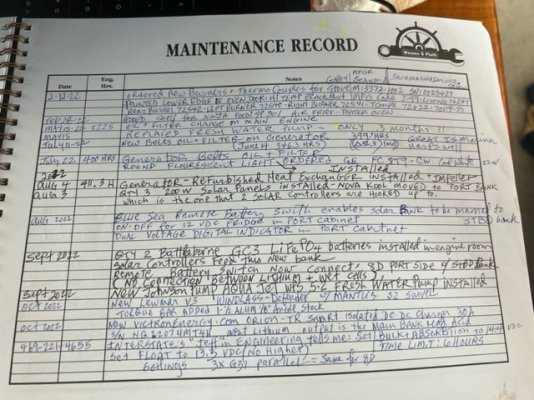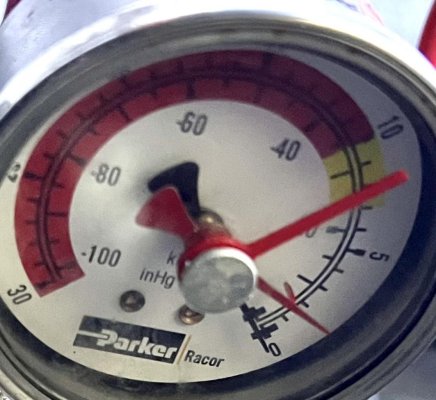It's easy to go overboard on this, if you're not that interested. However, every data point is important, not only for it's own information, but how it relates to other conditions.
[FONT="]WESTERLY - OPERATION LOG[/FONT]
[FONT="]Make operating inspections every 2 hours. Log inspections every 5-10 hours, or when appropriate. [/FONT][FONT="]BLUE[/FONT][FONT="] heat readings are not recorded.[/FONT]
[FONT="]NORMAL OPERATIONS ([/FONT][FONT="]GAUGES[/FONT][FONT="] at 1600-1800 rpm):[/FONT][FONT="]WLD%[/FONT][FONT="] (wet load percentage based on Status Log calculation), [/FONT][FONT="]CT [/FONT][FONT="](coolant temp from aft engine sensor):170F, O# (oil pressure):min20# (idle hot) - 65# (cold) – 55-56# (cruise/hot), FOV (fuel oil vacuum):<4 in, Pyro:400-500F, TRB (turbo boost pressure):2.6-4.2#, ERT (engine room ambient air temp): <110F, B1 Temp:60-85F[/FONT]
[FONT="]NORMAL OPERATING TEMPS ([/FONT][FONT="]HEAT GUN[/FONT][FONT="] at 1600-1800 rpm): [/FONT][FONT="]RWI[/FONT][FONT="](raw water inlet temp at center of strainer): 50-70F(for waters cruised), RWI (at HX):Max 20F above RWI at strainer), RWO(at HX): Max 10F above RWI at HX, RWO(at exhaust injection can): Max 45F above RWI at strainer,ME Exh Surge Chamber:<125F, CT (coolant temp at expansion tank top):188F(measures max coolant temp and depends on thermostat), HO-ALT (mid-case):180F (max charging w/blower on @ 1600 rpm),OT(oil temp at filter, depends on thermostat): 175-200F,ME Oil Bypass Filter (housing):155-180F,TM[/FONT][FONT="](transmission top of case):[/FONT][FONT="]90-105F[/FONT][FONT="], [/FONT][FONT="]IB[/FONT][FONT="](intermediate bearing - top):90-110F[/FONT]
[FONT="]VISUAL INSPECTIONS: [/FONT][FONT="] Steering pump reservoir - ER Bilge - Shaft Brush - Shaft Seal - Rudder Post/Steering Ram – Lazarette Bilge [/FONT]
[FONT="]TIME[/FONT][FONT="] DATE EHRS RPM WLD% CT O# FOV PYRO TRB ERT RWI RWO CT OT TM IB[/FONT]
[FONT="]1615 08/12/23 1556.3 1650 70.1% 170 55 <1.0F 460 3.0 106 66 106 188 200 106 104[/FONT]
[FONT="]1155 08/10/23 1545.3 1650 64.2% 170 55 <1.0F 475 3.0 95 67 98 187 198 96 100[/FONT]
[FONT="]1125 07/18/23 1535.2 1600 59.7% 170 55 <1.0F 440 2.7 98 63 101 187 198 97 88[/FONT]
[FONT="]0915 07/14/23 1523.0 1600 66.5% 170 55 <1.0F 430 2.6 106 68 105 188 199 105 101[/FONT]


